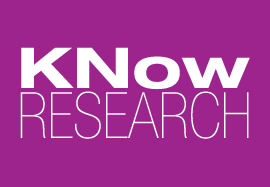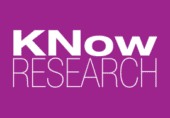The Value of Friction in Qualitative Research
Last year, I had the privilege of attending EPIC’s (Ethnographic Praxis in Industry Community) Annual Conference, an event that remains vivid in my memory a year later. What set this conference apart was its focus on one central idea— friction. This presented a unique challenge for me, with my anti-friction mindset, and tendency to avoid and eliminate tension at any cost. The decision to immerse myself in a topic I avoided daily sent my cortisol levels through the roof! I found myself on the hunt for some sponsored stress balls.
But jokes aside, as much as we’d like to take cover at the first signs of tension, it is an unavoidable truth of human existence. Reading through the conference website solidified that a tango with friction was a hard but necessary dance:
“Friction is a function of the everyday. The experience of friction can feel uncomfortable or constraining…however, we also understand friction as a generative force. The diverse perspectives, unexpected partnerships, and conflicting goals that friction yields can open time and space to plot creative paths forward.” -EPIC2023
I learned that friction is woven into the very fabric of qualitative research! Here are 4 pointers on how to spot it for yourself and navigate less-than-ideal situations:
1. Create Safe Spaces with Participants for Difficult Conversations
Oftentimes in qualitative discussions, we ask participants to share their personal and lived experiences, which can naturally elicit friction. For example, when we work on projects in banking and finance, participants quite often bear their souls, sharing personal struggles, like navigating job loss or student loan debt. As researchers, it is our utmost responsibility to approach these acts of vulnerability with empathy and respect, creating safe spaces that center participants’ emotional well-being.
2. Seek the Dissatisfaction
Think about how much friction occurs when a consumer interacts with a product or service. A totally satisfied, ‘10/10’ interaction does not reveal anything new or compelling for a brand. Instead, qualitative researchers must design their questioning to probe beyond surface-level praise and reveal underlying pain points to see deeper into consumer needs.
3. Insights Require Effort
As strategists, we know the analysis phase post-research may feel like a long journey ahead – hours spent tagging themes, drafting outlines, and fleshing out PowerPoint decks. AI promises efficiency with the power to digest hours of fieldwork and mass-produce deliverables in record time. But how do we ensure that the insights live as much in our brain as “the machine”? Ultimately, we need to feel confident that research findings are accurate and actionable. So, which manual levers do we need to safeguard?
4. Navigating Stakeholder Friction
Qualitative research rarely occurs in a vacuum – it requires navigating the competing priorities, assumptions, and worldviews of a diverse set of stakeholders. The “bookends” of a research endeavor – the beginning and end phases – can be where the most friction occurs. At the outset, align stakeholders on how they define success and find the underlying common goal through each nuanced lens. As you wrap up, offering different types of deliverables can tailor the insights to ensure they resonate effectively.
I came away from the conference with a big realization: it’s time to recognize friction within qualitative research and be willing to face it head-on. Rather than avoiding friction, we must recognize its potential as a transformative force.
Are you up for the challenge? Be sure to check out Part 2 of this series: Exploring Friction, where we cover a 4-step process to help your team identify, reflect on, and reframe workplace friction!

